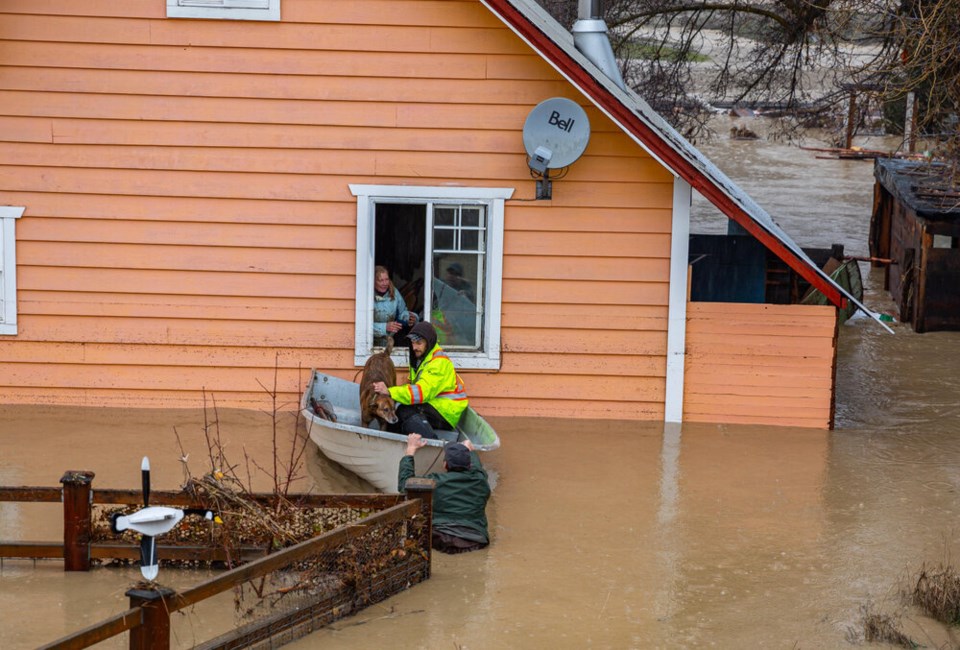As a “parade of storms” continues to batter B.C., the province’s public safety minister is warning residents to do whatever they can to ward off flooding and survive dangerous drives.
Between 60 and 100 millimetres of rain is expected to fall on Metro Vancouver and the Fraser Valley, including the flood-stricken communities of Abbotsford and Chilliwack, said Environment Canada in a rainfall warning Thursday.
“There are three big pulses of storms arriving with increasing intensity — the one we’re seeing now, another over the weekend and the biggest hitting around Tuesday,” said Public Safety Minister Mike Farnworth Thursday.
“The time to prepare is now.”
How should British Columbians prepare for potential flooding?
Farnworth urged all residents to pay close attention to Environment Canada weather alerts, to carry an emergency kit in the car and avoid unnecessary travel. If one lives in a flood-prone area, be ready to evacuate.
Emergency Management BC (EMBC) has its own guide on how to prepare for a flood.
One of the first steps you can take is to “storm-proof” your home. By cleaning out your gutters and drains, they are less likely to back up into your property and into your home if the rain doesn’t let up.
Flooding is the most costly climate-related disaster in Canada, according to Joanna Eyquem, a managing director at the University of Waterloo’s Intact Centre on Climate Adaptation. A flooded house can sustain an average of $43,000 in damages.
That’s just what's been counted. Eyquem says it’s estimated that actual losses are three to four times what's claimed through insurance.
“There’s a lot of concerns about the costs of adaptation,” she says. “But there’s also the cost of not adapting.”
Consider this: for each dollar spent on adaptation, experts say you'll get a $3 to $7 reduction in damage down the line. The further into the future you go, the worse climate impacts get and the more you save.
In March, the Intact Centre released its own comprehensive short and long guide on how to protect your home from a flood. Clean out your backwater valve, check your sump pump and remove debris from the nearest storm drain, ditch or culvert, recommends the guide. After all, they can all be done at no extra cost.
For under $250, consider installing window well covers, extending your downspouts away from the house’s foundation and storing your valuables in watertight containers.
If you're more serious and have more money to spend, the guide recommends installing a backup sump pump and battery.
“There are simple things we can all do,” says Eyquem. “I’m not saying it’s a panacea. If you have water up to your first floor, it’s coming in your door, it won’t save you.”
But, she adds, it might save you a lot of money in a minor flood event.
Some other home improvement recommendations from EMBC include:
- anchoring any oil or fuel tank to the floor;
- raising appliance and electrical panels onto wood or cement blocks;
- installing a tiled floor with waterproof grout;
- or for the serious, installing self-closing flood barriers for your home.
While Eyquem stresses that all governments need to be held accountable for their duties to protect residents, they are not the only ones with responsibilities in a disaster.
“There’s a role for everybody,” she says. “It’s a whole society approach.”





